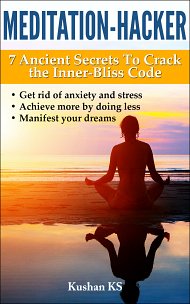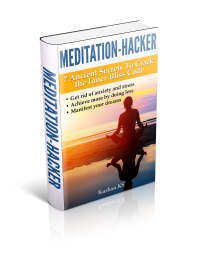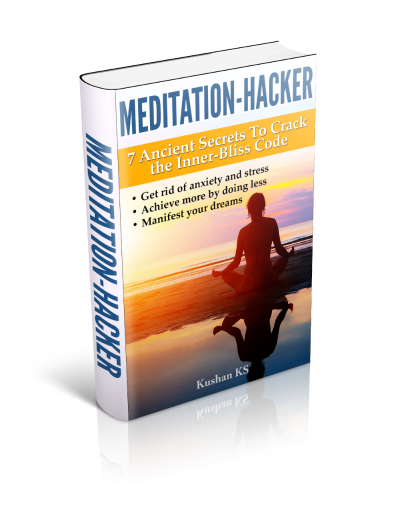Guided Mindfulness Meditation
"Of all footprints, that of the elephant is supreme; of all mindfulness meditations, that on death is supreme" - Buddha

This guided mindfulness meditation pertains to mindfulness of breath.
Bringing awareness to your breath helps in detaching yourself from the incessant thoughts and emotions running through your mind.
Basics first
- Record these instructions in your own voice or ask someone you trust to read them to you while you meditate. Do it at a slow pace
- Take a long pause (10-15 seconds) between two paragraphs
- Begin by sitting in your normal meditation posture - preferably cross legged on the floor, and if that's difficult, sit on a chair with your back and your shoulders straight
- Alternatively, you could lie down on the floor (as is done in yoga nidra meditation), but you run the risk of dozing off
- Take a few deep breaths and calm your body and mind
- Close your eyes
- Listen to the directions and follow them (pardon me for stating the obvious)
Guided mindfulness meditation script
- Take a long and deep breath into your abdomen and let it fall as you exhale. Continue breathing from your abdomen, and not from your chest.
- Breathe naturally. Do not force yourself into any set pace or rhythm. Whatever the nature of the breath, accept it as it is.
- Scan your body from head to toe and notice any tightness or soreness in any muscle or tissue of the body.
- Breathe into the tightness and soften it. Breathe and let go, so that all the soreness dissolves.
- Become mindful of the movement of breath in the body. Notice the sensations in the abdomen or in the chest, or in both, while breathing.
- Do not be concerned if sounds, emotions, thoughts or past experiences pull your attention away from the breath. Acknowledge their presence, let them be, and let them pass away.
- Without struggling, gently bring your focus back to the breath.
- Now notice the entire process of the breath - beginning, middle and end of the rising movement and the beginning, middle and end of the falling movement.
- If focusing on the breath leads to claustrophobia or other problems, divert attention from the breath to bodily sensations.
- Meet and greet the experience of breath in an open and accepting manner. In the now.
- One breath. Right here. Right now. Just one breath. Rising… and falling. Rising… and falling.
- If your mind travels to the future or past, notice it as 'thinking,' 'thinking' or 'remembering,' 'remembering,' and bring your mind back to the now. Here and Now. Here and Now. Rising and falling. Rising and falling.
- Rest in the awareness.
- Choose to carry the mindfulness of breath into your daily activities.
- When you are ready, open your eyes and arise.
With practice, you will find that the breath, the breather and the breathing becomes one, and the duality and separation dissolves.
I hope this guided mindfulness meditation script serves you well until a free, downloadable guided mindfulness meditation mp3 becomes available on this site.
Add this site to your RSS feed, or subscribe to Kkaivalya (my free newsletter) by filling in your details in the left column, to be the first one to know when that happens.
Mindfulness meditation is about prolonging the gap between one sensation/thought/feeling/event and the next one following it. The longer you stay in that gap, the closer you get to realization.
Return from Guided Mindfulness Meditation to Free Guided Meditations

Get my book, Meditation-Hacker: 7 Ancient Secrets to Crack the Inner-Bliss Code and receive valuable information on meditation that you can use to improve the quality of your health and life.


Comments
I would love to hear your meditation experiences. And, if you are a beginner, your questions and apprehensions about meditation. Comment below or contact me directly through the navigation bar on the left of this page.